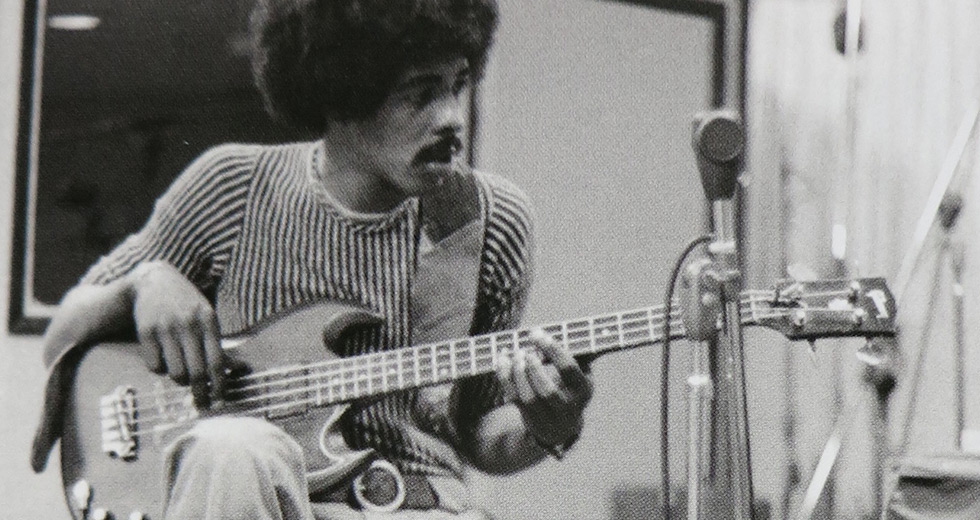A Guide to Neue Deutsche Welle
While many consider Neue Deutsche Welle the domain of acts like Nina Hagen, Falco and other mainstream acts, Klaus Walter explains its punk origins – and how the creative impulse behind its genesis still fuels artists like Gudrun Gut, Thomas Fehlmann and Moritz von Oswald today
Just as its name suggests, Neue Deutsche Welle was a reaction to the New Wave(s) in Britain and the United States. In those countries, New Wave could do without a national denomination. It was, in a sense, Anglo-American by nature. But in German pop culture, virtually nothing is by nature – starting with the fact that there were still two German states as Neue Deutsche Welle began to form in the late ’70s.
In this case, when we talk about NDW, we’re talking about music made in the West – the Federal Republic Germany (FRG) including West Berlin. It’s also important, to prevent misunderstanding, to say that we’re talking about what we’ll call Original Neue Deutsche Welle, abbreviated as ONDW from here on. At a certain point, the then-powerful record industry began to see the commercial potential of Neue Deutsche Welle as a term, and it started marketing everything that was the least bit colorful, shrill and German-speaking under the NDW tag.
Using London’s Rough Trade as an example, these German pioneers often attached their companies to shops.
ONDW was inspired and triggered by punk, post-punk and New Wave, especially of the Anglo-American kind. Many musicians initially found inspiration in London, New York and, to a lesser extent, Los Angeles, and eventually brought a similar DIY mentality to Germany – with a time lag of one or two years. In structure and in motive, ONDW shows similarities to punk’s early years in Great Britain, as well as with New York punk in its close association with the art world. Punk, of course, was positioned as a tabula rasa. First get rid of everything, make room for the new, kill your idols. Or, in the words of the Clash, “danger stranger you better paint your face, no Elvis, Beatles or the Rolling Stones in 1977.” Punk sought to confront the establishment – and that included the music industry as well. In the Federal Republic, that meant young and not-so-young enthusiasts creating labels to distribute their music.
Using London’s Rough Trade as an example, these pioneers often attached their companies to shops. Berlin punk fan Burkhardt Seiler traveled to London in 1978, in search of new sounds. While he was there, he made the acquaintance of Rough Trade’s Geoff Travis and, when he returned to Germany, became one of Travis’ export customers, taking on the name of Zensor in 1979 for his shop in the back room of a clothing boutique. At first, Zensor-Schallplatten’s repertoire consisted of imports from Great Britain and the US. But the name that Seiler picked for the shelf reserved for obscure German productions is one that would go on to make history: Neue Deutsche Welle.
The Zensor shop was a meeting point for a nucleus of like-minded artists. Now-legendary bands like Mania D (later Malaria), Mittagspause (later Fehlfarben) and Deutsch-Amerikanische Freundschaft played in the shop’s basement. So did Einstürzende Neubauten. Zensor did it all: record shop, record label, shipping, distribution. Simultaneously, similar DIY-oriented shops and labels popped up all across Germany. The musicians from Der Plan built the company Atatak in Düsseldorf. In Hamburg, Alfred Hilsberg founded ZickZack, and later the influential label What’s So Funny About, which in the late ’80s and early ’90s (along with L’Age D’or) would go on to become the breeding ground of the so-called Hamburg School.
Hilsberg also established the term Neue Deutsche Welle in an article in then-influential magazine Sounds in October 1979 called “Neue Deutsche Welle – From Grey Cities’ Walls.” A multi-tasker avant la lettre, Hilsberg became a key figure in the genre: explorer, entrepreneur, propagandist, manager, jack of all trades. It didn’t make him rich. But Hilsberg stuck around longer than most of his peers and refrained from using his position to jump into the money-making side of the industry.
“How German is it?” asked the Austrian-American author Walter Abish in his 1980 novel of the same name. ONDW was very German. Regardless of their differences, virtually all bands of that particular age consciously and aggressively dealt with (West-)German issues, including Germany’s history. (Only 32 years had passed since the war, the Nazis were still among us.) Just look at the band names: Wirtschaftswunder and Die Radierer – two groups from the self-ironically titled Limburg School – both alluded to a history that many wanted to forget. Names like ZK and Kosmonautentraum, meanwhile, teased the politically stirred fears of Soviet communism. Deutsch-Amerikanische-Freundschaft (DAF) referred to the bureaucratic (and unequal) friendship forged via Germany’s defeat in World War II.
Munich’s Freiwillige Selbstkontrolle was named after the institution that decided on motion picture ratings in Germany. Ede und die Zimmermänner (later just Die Zimmermänner) were a homage-turned-band named after Eduard Zimmermann, who fueled the German public’s fear of crime with his ahead-of-its-time shows Vorsicht Falle and XY Ungelöst. Two largely woman-driven bands chose to take on names related to bodily hygiene. Active on Hannover’s self-founded label No Fun, Hans-A-Plast shared their name with the popular German bandage. Zurich’s pre-Riot-Grrrl-band Kleenex was only allowed to bear their name between 1978 and 1979, before the body care-conglomerate got in touch. They went by Liliput from then on.
All these names were omens. They had a fundamentally confrontational relationship to the present – as opposed to names like Frumpy, Kraan, Lake, Scorpions or Supermax. These bands took a stand, strategically and artistically against the generation before them: German names instead of English, German lyrics instead of English, sharp contours instead of clear contours, reality instead of fantasy, confrontation instead of harmony, short hair instead of long hair. “Schneid’ dir die Haare, bevor du verpennst!” sang Fehlfarben on “Gottseidank Nicht in England.”
The Düsseldorf-based band’s 1980 album Monarchie und Alltag was one that many could agree on. Fehlfarben come from the inner circle of Düsseldorf’s punk scene around Ratinger Hof, where Die Toten Hosen also launched their career. Monarchie was the right record at the right time. Post-punk and NDW had superseded the lengthy and paralyzing sub-cultural hegemony of hippie culture. (Hence the lyric about cutting your hair before you get left behind.)
Post-punk and NDW superseded the lengthy and paralyzing sub-cultural hegemony of hippie culture.
The punk-inspired and fairly catchy songs of Fehlfarben opened the doors to punk to those who were previously uninterested, and Monarchie und Alltag became an unintentional consensus record – even more so when EMI label overruled the band and released “Ein Jahr (Es geht voran)” as a single the following year. The chorus about things moving forward became a sing-along – even for the German squares that the lyrics attacked.
In 2001 – 21 years after its release – Monarchie und Alltag was awarded the Goldene Schallplatte for selling 250,000 units, and it repeatedly comes up in best album lists in German magazines. “The only German punk record that matters,” Rolling Stone once wrote.
Fehlfarben wasn’t like most late ‘70s ONDW bands. Less influenced by British (post-)punk bands, if not technically incapable of producing an album like Monarchie und Alltag, other groups went their own way. They beat on iron like Einstürzende Neubauten and Die Krupps. (Again, German band names.) Einstürzende Neubauten – collapsing new buildings – were ahead of their time in both name and sound. A few months after their premiere in 1980, Berlin’s Kongresszentrum collapsed – a building where John F. Kennedy spoke during his Berlin visit in 1963 and an important symbol of the aforementioned German-American friendship. The namesake of the Krupps? A Ruhr-area steel industry dynasty that used forced labor to drive the war machinery during the Nazi era. (A famous saying by Adolf Hitler likened the prototypical German soldier to Krupp steel.)
Einstürzende Neubauten quickly made the jump from Berlin subculture to high culture. In 1986, they were brought to Hamburg’s playhouse by renowned director Peter Zadek. By that time, their singer and figurehead Blixa Bargeld (Bargeld, as in Cash, Johnny) had mutated from heroin-chic-bugaboo to dandy-caricature while doubling his body weight. (He also played in Nick Cave’s Bad Seeds on the side for many years.)
Gudrun Gut has had a similarly long-running career. Before she became a member of the first Einstürzende Neubauten line-up, she had already formed Mania D. with Bettina Köster and Beate Bartel. That band would soon morph into Malaria – and score an unexpected hit with “Kalter Klares Wasser,” a tune remixed just after the turn of the century by Chicks On Speed. By the time of that remix, Gudrun Gut was already well-established in contemporary electronic music, after founding the influential Monika Enterprise label. Gut also runs the techno club / radio show Ocean Club, together with her partner Thomas Fehlmann. (Fehlmann himself was a founding member of Palais Schaumburg, now a recording artist on Cologne’s Kompakt label and member of The Orb.)
For some of these veterans, the philosophy of ONDW still guides them today – and into the future.
Gut has released many solo records on Monika, but the title of her 2010 collaboration with Antye Greye-Fuchs, Greye-Gut-Fraktion, seems to explain her career the best. Hers is a biography of continuation and fractures. Or rather, maybe continuation is only possible with fractures? The fracture that happened when the Berlin Wall fell, the fracture brought on by the arrival of techno, a new orientation on the empty center of unified Berlin, reconstruction of artistic templates – these things left their mark on many musicians who started as part of ONDW.
In spite of their distance to Berlin, that also includes Munich’s Freiwillige Selbstkontrolle (FSK), who went through numerous changes in style and direction since they began in 1979. One of the things that binds the members of FSK is their quasi dialectic relationship to high culture. Being a part, but apart. FSK founder Michaela Melian is an art professor and award-winning artist. Her husband and FSK co-founder Thomas Meinecke is a published novelist as well as a radio and club DJ… and so on and so forth. For some of these veterans, the philosophy of ONDW still guides them today – and into the future. The artists continue, and they are often still intertwined. And some are held in higher esteem abroad than in Germany. Moritz von Oswald, for example.
In the ‘80s, von Oswald drummed in a later lineup of Palais Schaumburg (again a NDW name: Palais Schaumburg was the residency of the German President. Heinrich Lübke, Karl Carstens, men with Nazi pasts). Since the ’90s von Oswald was, along with Mark Ernestus, the key figure behind Basic Channel, Maurizio and Rhythm & Sound. He invented a new sound with these projects, the bridge between techno and dub. Continually harnessing the same sort of creative energy that powered ONDW, von Oswald has stayed relevant – decades into his music career.
Von Oswald has often refused to engage in the rituals of the business. He does not hold his face into cameras, prizes anonymity. He’s largely unknown to the majority of the pop audience. Which is a shame, because von Oswald was involved with records just as groundbreaking and trend-setting as Revolver, Electric Ladyland, Blue, There’s a Riot Goin’ On or that banana record. Indeed, a large portion of the people that love those bands have never heard the name Moritz von Oswald. And, from that large portion, a majority wouldn’t be able to make sense of comparing von Oswald to the heroes of old. That alone is symptomatic of the disparate and contradictory history of ONDW and its long-term effects on the present.
Translated by: Anthony Obst
Header image © Ulstein Bild

